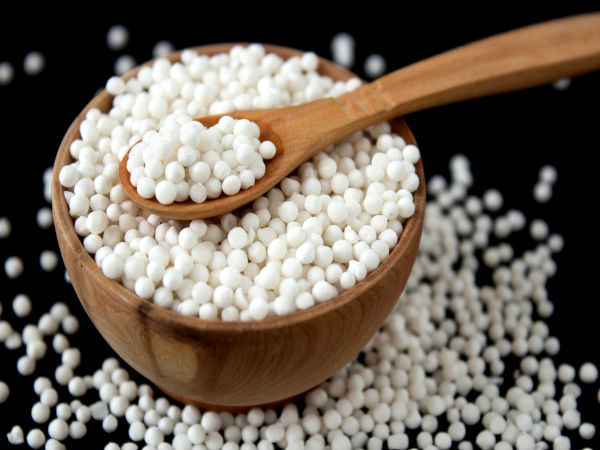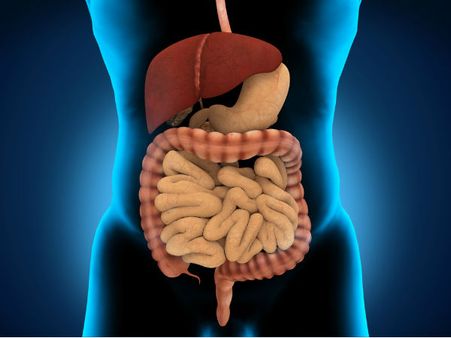Just In
- 9 hrs ago

- 9 hrs ago

- 9 hrs ago

- 13 hrs ago

Don't Miss
- Movies
 Bigg Boss OTT 3 Contestants: Shiv Thakare’s KKK 13 Co-Contestant To Participate? Actress Reveals TRUTH
Bigg Boss OTT 3 Contestants: Shiv Thakare’s KKK 13 Co-Contestant To Participate? Actress Reveals TRUTH - Finance
 1:3 Bonus Issue, 4.38% Dividend Yield: Maharatna PSU To Mull Fundraising, Buy For TP Rs 298
1:3 Bonus Issue, 4.38% Dividend Yield: Maharatna PSU To Mull Fundraising, Buy For TP Rs 298 - Sports
 IPL 2024 LSG vs DC Live Cricket Score, Match 26 Latest Updates: Lucknow Super Giants Opt To Bat First
IPL 2024 LSG vs DC Live Cricket Score, Match 26 Latest Updates: Lucknow Super Giants Opt To Bat First - News
 India Issues Travel Advisory For Citizens Against Iran And Israel Amid Middle East Tensions
India Issues Travel Advisory For Citizens Against Iran And Israel Amid Middle East Tensions - Technology
 Oppo A3 Pro Launched With 120Hz Display, IP69 Rating; Check Price and Availability
Oppo A3 Pro Launched With 120Hz Display, IP69 Rating; Check Price and Availability - Automobiles
 Bajaj Pulsar N250: New Vs Old, Differences & Upgrades Overview
Bajaj Pulsar N250: New Vs Old, Differences & Upgrades Overview - Education
 Arrears of Post-Doctoral/Doctoral Fellowships - Extension of Last Date
Arrears of Post-Doctoral/Doctoral Fellowships - Extension of Last Date - Travel
 Best Indoor And Outdoor Amusement Parks In Mumbai For Kids
Best Indoor And Outdoor Amusement Parks In Mumbai For Kids
11 Amazing Benefits Of Sabudana (Tapioca Pearls)

In Indian households, sabudana or tapioca pearl is a familiar name as they are popularly eaten as a favourite breakfast and evening snack. Be it in the form of sabudana khichdi, sabudana cutlet or sabudana kheer, sabudana offers a whole range of health benefits.

What Is Sabudana (Tapioca Pearls)?
Sabudana or tapioca pearl is made from tapioca sago. The tapioca sago is a starchy substance obtained from the Cassava root. As it is mostly in starch form, it has a very low amount of nutrients [1]. The starchy liquid is squeezed out from the Cassava root and the liquid is kept to evaporate. When all the water is dried up, the powder is processed and used to make flakes, pearls and white flour.
Tapioca sago mostly comes in the form of pearls which are easily added to milk, water or rice to thicken the mixture transforming it into a stew, curry or pudding.
Nutritional Value Of Sabudana (Tapioca Pearls)
100 grams of tapioca pearls contain 10.99 g water and 358 kcal. They also contain:
- 0.02 grams total lipid (fat)
- 88.69 grams carbohydrates
- 0.9 grams total dietary fibre
- 3.35 grams sugar
- 0.19 grams protein
- 20 milligrams calcium
- 1.58 milligrams iron
- 1 milligram magnesium
- 7 milligrams phosphorous
- 11 milligrams potassium
- 1 milligram sodium
- 0.12 milligrams zinc
- 0.004 milligrams thiamin
- 0.008 milligrams vitamin B6
- 4 µg folate

Health Benefits Of Sabudana (Tapioca Pearls)

1. Supports weight gain
If you want to put on weight, tapioca pearls are the right food as they contain good amounts of carbohydrates and calories. Around 100 grams of sabudana contain 88.69 grams carbohydrates and 358 calories. Eating more calories than what your body needs will make you gain weight. As sabudana is a starchy food, you will gain weight easily [2].

2. Provides energy
One of the main reasons why sabudana is a must-have food during Navratri fasting is it provides the body with energy [3]. Some people break their fast with sabudana khichdi or pudding to give their body instant energy. Also, sago porridge is effectively known to treat excess bile as it provides a cooling effect to reduce the body's heat while you are on a fast.

3. Aids in muscle growth
If you are a vegetarian, sabudana is a great source of protein which is required for the growth of muscles, repairs damaged cells and tissues and also help in cell growth [4]. Apart from muscle growth, this comfort food also lets you gain physical strength. So vegetarians, you can start eating sabudana for your daily protein intake. Also, if you want to build muscles sabudana can be a great food to have as a pre and post workout snack.

4. Strengthens bones
Although the mineral content in tapioca pearls is limited, they have calcium, magnesium and iron. All these minerals help in the creation of bone tissues which strengthens bone mineral density, prevents arthritis and osteoporosis [5]. Have a bowl of sabudana khichdi daily to maintain bone health and improve bone flexibility.

5. Lowers blood pressure
Sabudana contains significant amounts of potassium which is known to keep your blood pressure under control. This mineral acts as a vasodilator which works by relaxing the tension in the blood vessels and open them up. This promotes healthy blood flow through the blood vessels, as a result, blood pressure is lowered and there is less strain in the heart [6].

6. Improves digestion
Tapioca is known to prevent stomach-related problems like gas, bloating, indigestion and constipation. It contains a good amount of fibre, protein, fats and carbohydrates which increase your metabolism and help you maintain good digestive health. Dietary fibre can speed up the digestive process and rebalance the healthy gut bacteria [7].

7. Promotes heart health
Sabudana contains zero cholesterol which is actually good as you don't need to worry about high cholesterol. An increase in cholesterol causes the build-up of plaque in the arteries which is known as atherosclerosis [8]. This condition could further lead to heart attack, stroke and angina. So, keep your heart healthy by consuming sabudana.

8. Fights birth defects
The presence of folate and vitamin B6 in sabudana aid in the proper development of the foetus and prevent the occurrence of neural tube defects in infants [9], [10]. This can have a serious effect on the newborn. Folate is an essential nutrient required for pregnant women in the first few months of pregnancy.

9. Non-allergic in nature
Tapioca or sabudana is free of gluten, nuts and grains so people who are sensitive to gluten, having celiac disease and nut allergies will not have a problem consuming this food [11], [12]. You can use tapioca flour instead of refined white flour as the latter contains gluten. Tapioca flour is considered the best alternative to white flour.

10. Promotes gut health
Sabudana is a good source of resistant starch, a type of starch that passes through the digestive tract without getting digested. As the resistant starch reaches the colon it feeds the healthy gut bacteria, thus keeping your gut healthy [13].

11. Improves exercise performance
Studies have shown that drinks containing sago and soy protein during exercise can delay tiredness during high-intensity cycling training. It is because sago is an excellent source of carbohydrates that provide your body with energy [14].
Ways To Eat Sabudana
Sabudana is first soaked in water for 5-6 hours or overnight to allow it to become soft and easy to eat.
Here are different ways to prepare them:
- Preparesabudana khichdiby mixing sabudana, potatoes and peanuts and cook it in the microwave.
- Preparesabudana tikkiby mashing it up with potato and frying it in oil.
- To make tapioca pudding, mix tapioca pearls with coconut milk or whole milk and serve with fruit toppings.
- You can also preparesabudana kheer, a common sweet dish made during festivals.
- Bubble tea is a drink which is made by using tapioca pearls, milk, brewed tea, sugar and served with chewy tapioca pearls, fruit jelly, and pudding.
Common FAQs
Can you eat sabudana daily?
Yes, you can include sabudana into your daily diet as it is easier to digest. However, if you are looking to lose weight, you should consume it in moderation.
Is sabudana good for diabetics?
Sabudana has a high carbohydrate content which can lead to an increase in blood sugar levels. So, diabetic people shouldn't consume on a daily basis.
Is sabudana harmful for health?
When sabudana is processed properly it doesn't have any adverse effects, however, if it is poorly processed it may cause cyanide poisoning. Cassava roots contain a toxic compound called linamarin, which gets converted into hydrogen cyanide in the body and may cause cyanide poisoning.
Is Sabudana good for fasting?
Sabudana is the most common dish eaten during fasting because it provides the much-needed energy, has a cooling effect on the body and keeps you feeling full for a longer period of time.
-
 recipesMahashivratri Recipes: How To Make Sabudana Bhel
recipesMahashivratri Recipes: How To Make Sabudana Bhel -
 recipesBanana-Tapioca Pearls Pudding Recipe: How To Make Kele Aur Sabudane Ki Kheer
recipesBanana-Tapioca Pearls Pudding Recipe: How To Make Kele Aur Sabudane Ki Kheer -
 nutrition10 Nutritional Health Benefits Of Cassava, Recipes And Side Effects
nutrition10 Nutritional Health Benefits Of Cassava, Recipes And Side Effects -
 recipesTapioca Chips Recipe: How To Make Tapioca Chips
recipesTapioca Chips Recipe: How To Make Tapioca Chips -
 nutritionIs Tapioca Healthy?
nutritionIs Tapioca Healthy? -
 nutritionWhat Happens To Your Body When You Eat Sabudana?
nutritionWhat Happens To Your Body When You Eat Sabudana? -
 break fastKerala Kappa Puzhukku
break fastKerala Kappa Puzhukku -
 healthDo You Keep A Clove Of Garlic Under Pillow? Not To Keep Vampires At Bay, There May Be Scientific Reasons
healthDo You Keep A Clove Of Garlic Under Pillow? Not To Keep Vampires At Bay, There May Be Scientific Reasons -
 healthGet Your Groove On: 5 Health Benefits Of Dancing To Afro Beats
healthGet Your Groove On: 5 Health Benefits Of Dancing To Afro Beats -
 healthIndigenous Delicacies: 5 Rare Indian Wild Foods That Are So Healthy You Should Try It!
healthIndigenous Delicacies: 5 Rare Indian Wild Foods That Are So Healthy You Should Try It! -
 healthHaving Chicken Soup At Home Can Cure These Health Issues
healthHaving Chicken Soup At Home Can Cure These Health Issues -
 healthBoost Your Health with Beetroot: Health Benefits And Ways To Add The Colourful Veggie In Your Diet
healthBoost Your Health with Beetroot: Health Benefits And Ways To Add The Colourful Veggie In Your Diet


 Click it and Unblock the Notifications
Click it and Unblock the Notifications



